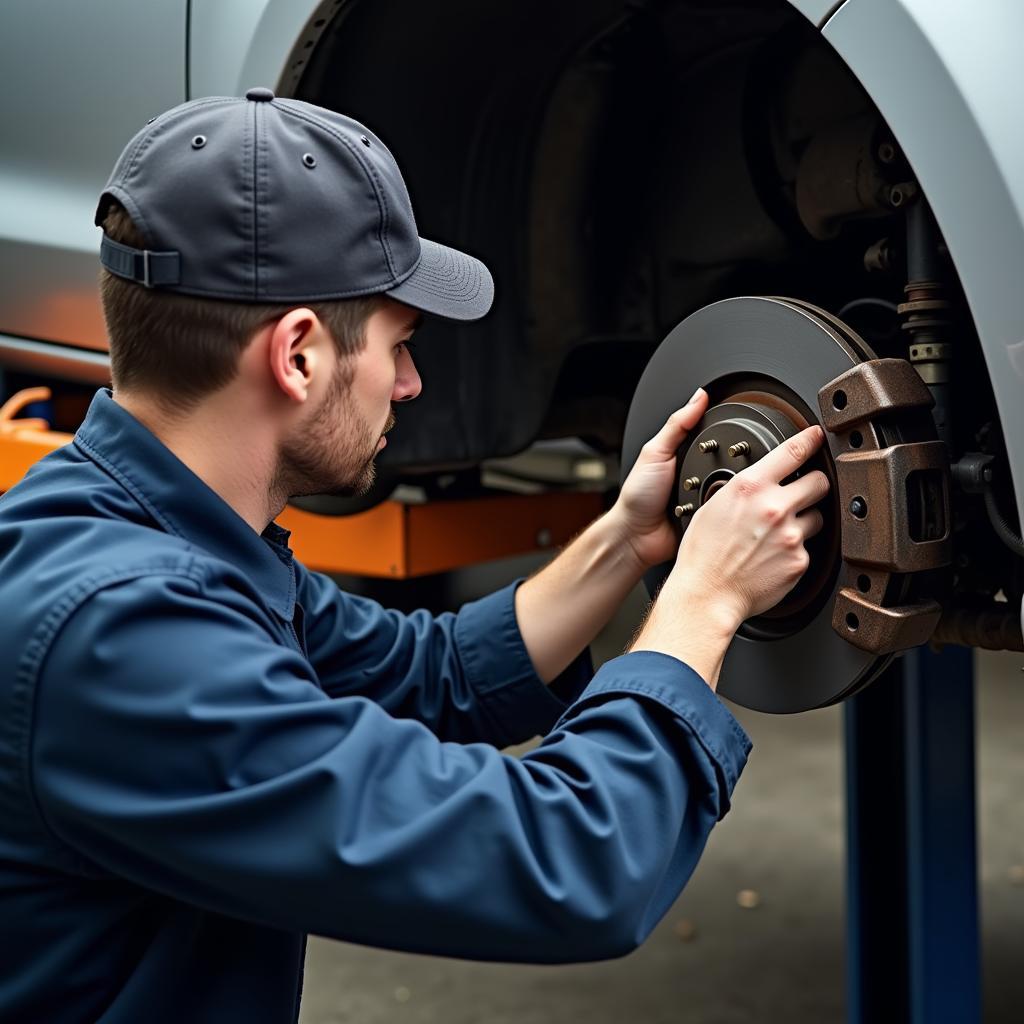What Happens When Your Car Goes for a Service?
You carefully drive your car into the service center, hand over the keys, and wave goodbye, trusting it’s in good hands. But what exactly happens after that? What magic do those skilled technicians work to keep your vehicle running smoothly?
This article delves deep into the intricate world of car servicing, explaining each step involved in a standard car service and answering all your burning questions.
Understanding the Importance of Regular Car Service
Before we pop the hood on a standard service procedure, let’s understand why it’s crucial. Regular car servicing isn’t just about keeping your car clean and shiny; it’s about ensuring its longevity, reliability, and your safety on the road.
Think of it as a health checkup for your car. Just like us, cars need regular checkups to detect potential issues early on, preventing costly repairs down the line.
 Car Service Checklist
Car Service Checklist
What Happens During a Car Service?
The specific tasks performed during a car service can vary depending on the make, model, age of your car, and the type of service due (interim, full, or major). However, a standard service generally includes these essential checks and procedures:
1. The Initial Inspection: Listening to Your Car’s Story
The first step involves a thorough inspection of your car, inside and out. The technician will:
- Discuss any issues: They’ll start by asking you about any problems you’ve noticed, any unusual noises, or warning lights on your dashboard.
- Check the fluids: They’ll inspect the levels and condition of essential fluids like engine oil, coolant, brake fluid, power steering fluid, and windshield washer fluid.
- Inspect the tires: They’ll examine the tire pressure, tread depth, and overall condition, looking for any signs of wear and tear.
- Examine the lights: They’ll ensure all exterior lights – headlights, taillights, brake lights, and turn signals – are functioning correctly.
2. Under the Hood: Examining the Heart of Your Car
Next, the technician will delve into the engine bay, where the real action happens:
- Change the engine oil and filter: This is perhaps the most crucial aspect of a car service. The old, dirty oil is drained, and a new oil filter is installed to ensure the engine is properly lubricated and protected from wear.
- Inspect the air filter: A clogged air filter restricts airflow to the engine, reducing performance and fuel efficiency. The technician will check its condition and replace it if necessary.
- Check the battery: The battery’s voltage is checked to ensure it’s healthy and capable of starting the engine reliably.
3. Keeping You Safe: The Importance of Brake Inspection
Your car’s braking system is critical for your safety. The technician will meticulously inspect the following:
- Brake pads and discs: They’ll measure the thickness of the brake pads and check the brake discs (rotors) for any signs of wear, scoring, or warping.
- Brake fluid: As mentioned earlier, the brake fluid level will be checked and topped up if needed.
 Mechanic Inspecting Brakes
Mechanic Inspecting Brakes
4. Beyond the Basics: Additional Checks and Procedures
Besides the above essential checks, a standard car service may also include:
- Checking the spark plugs: Spark plugs ignite the fuel-air mixture in the engine. Worn-out spark plugs can cause misfires, reducing performance and fuel economy.
- Inspecting the drive belts: Drive belts power various engine components like the alternator, power steering pump, and water pump. They’ll check the belts for wear and tear and replace them if needed.
- Checking the suspension: The technician will inspect the suspension components, such as the shock absorbers and springs, for any signs of wear or damage.
The Final Touches: Wrapping Up the Service
Once all the checks and procedures are complete, the technician will:
- Top up all fluids: Any fluids that are low will be topped up to the recommended levels.
- Reset the service indicator: Most modern cars have a service indicator light on the dashboard. The technician will reset this light after completing the service.
- Take your car for a test drive: To ensure everything is working correctly, the technician will take your car for a short test drive.
FAQs
How often should I service my car?
Most car manufacturers recommend servicing your car every 12,000 miles or 12 months, whichever comes first. However, it’s always best to consult your owner’s manual for specific recommendations for your car model.
What’s the difference between an interim and a full service?
An interim service is a more basic service that includes an oil change, oil filter replacement, and a visual inspection of key components. A full service is more comprehensive and includes all the checks and procedures mentioned above.
What if I don’t service my car regularly?
Neglecting regular car service can lead to various problems, including reduced fuel efficiency, decreased performance, premature wear and tear on engine and other components, and increased risk of breakdowns.
Do you need help deciding when your car needs a service?
For more information on car servicing, check out these helpful resources:
We understand that keeping your car in top shape can be confusing. If you need expert car servicing or have any questions, don’t hesitate to contact our team of experienced technicians. You can reach us via WhatsApp: +1(641)206-8880 or Email: [email protected]. We’re available 24/7 to assist you.

